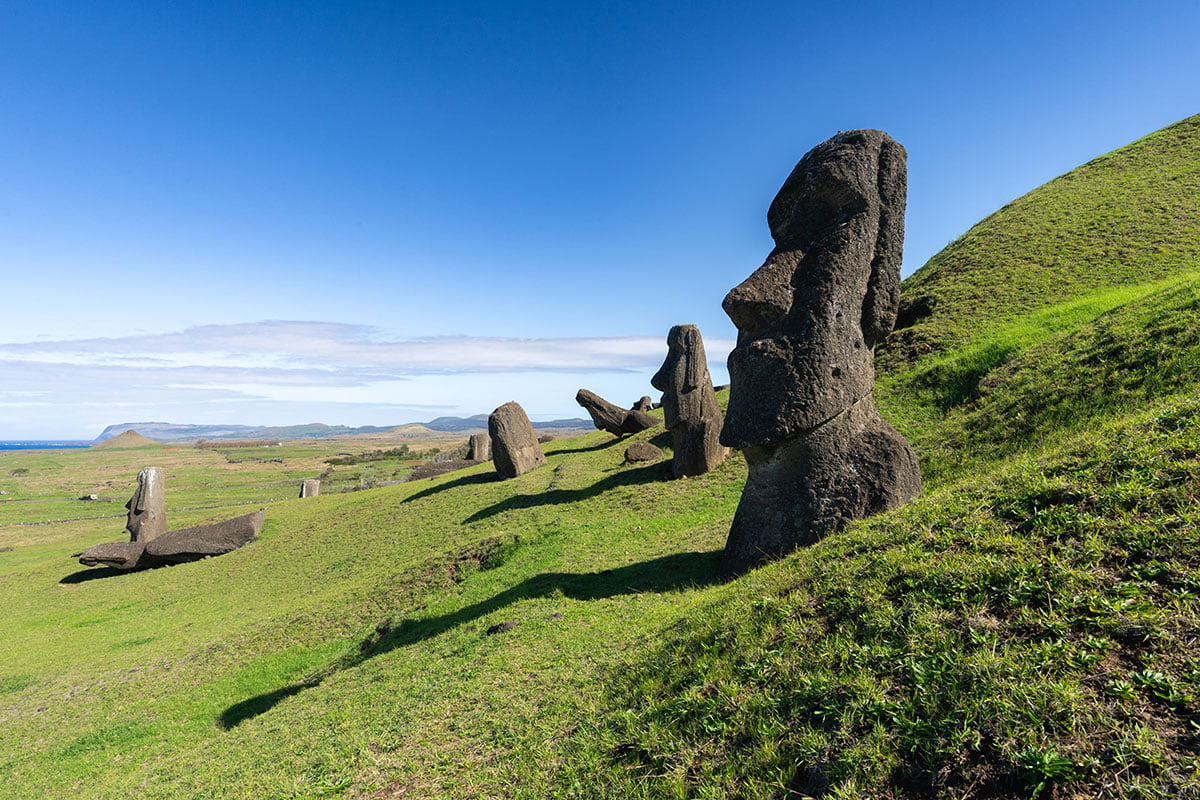
The moment when Chile was part of my travel itinerary, I immediately wanted to include Easter island. As a young girl I’ve always been fascinated by this remote place in the middle of the Pacific Ocean. A mysterious place I never imagined going to, and now it was happening!
Getting to the Easter island
The only possibility to reach Rapa Nui (Easter island) is through a flight from Santiago, Chile. LATAM is the sole airline connecting to the island and offers 9 flights a week. Before boarding the plane, one must have already filled in the online entry form and have an official hotel booked.
Visiting the mysterious Moais
To enter the archeological sites on the island, the national park pass is mandatory. This can be purchased online, or at the airport when arriving for 75.000 pesos. As I liked to be prepared, I bought the national park pass on the official website and downloaded it on my phone, ready to go!

Moais aligned at Tongariki
Guide is mandatory
Since the pandemic it is mandatory to visit the archeological sites with a certified guide. My original plan of renting a moped and going at it solo was no longer an option. Realizing I was at this unique once-in-a-lifetime place, I didn’t want to visit the sites as part of a large group, therefore I hired a private guide.
Hiring a private guide
Having a private guide is so worth it! On the official website all the guides are displayed. As a solo female traveler, I felt more comfortable with a female guide. I looked up one who speaks English, and with only a photo as reference, someone with a nice smile. I contacted Merahi Pont through Whatsapp and she was available for the dates I’m visiting. As I was just by myself, she offered me a good deal too! Truly!
2 Days exploration with the guide
Merahi and myself went to explore the island for two full days. Since it was just the two of us in her car, I could request all the photo stops I wanted, getting shots of the beautiful landscape too.
Day 1 – the popular sites with the moais
On the first day we visited the most popular sites and she told me about the Rapa Nui culture and how the people lived back in the day. The first and best stop of the island was at Rano Raraku. With the beautiful morning light and not too many people around, I could enjoy this place with all its wonders. Rano Raraku is where the Moai were carved before they were moved to the rest of the island.
All over the island, the Moai are standing facing land inwards. At Rano Raraku it’s the only place they stand facing towards the sea.
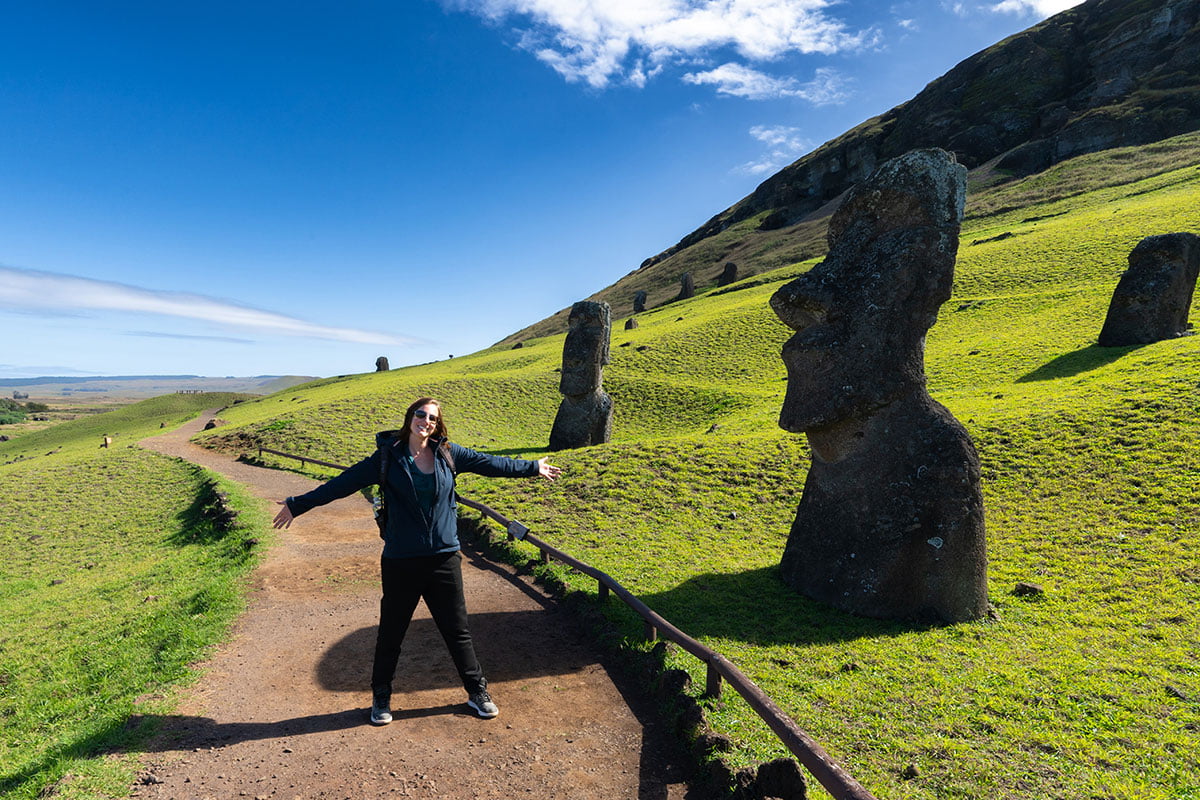
Moai at Rano Raraku
The largest and most important ceremonial structure on the island is Ahu Tongariki, in the summer months the sun perfectly aligns through the moai at sunrise. As it’s winter we visited Tongariki during the day.

The guard welcoming us at Tongariki
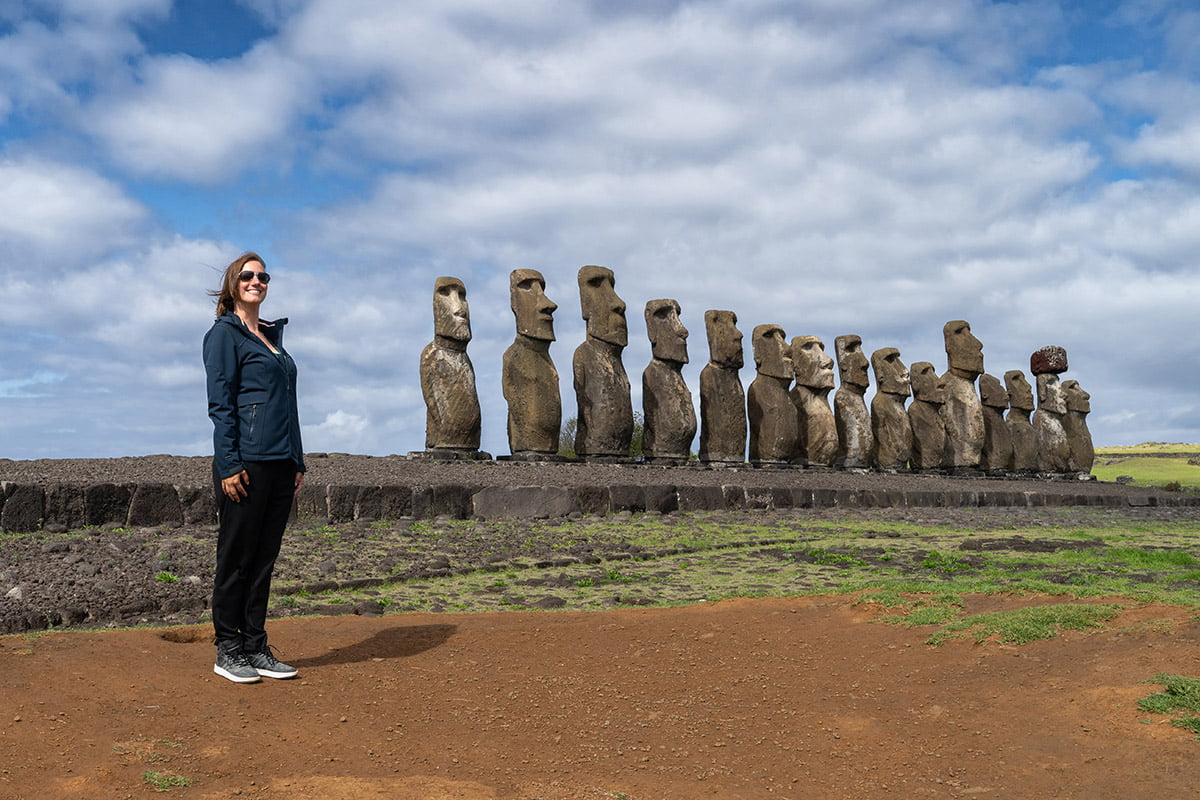
Standing proud at Tongariki
Merahi asked me if we wanted to stop for lunch at Hanga Roa (the town) or Anakena beach. The beach of course. Anakena is the only beach on the island, but it makes up for it in beauty.

Relaxing at Anakena beach
We finished the first day at Tahai moai close to town.

Tahai with the ocean backdrop
Day 2 – landscape and caves
The second day started with a bit of overcast, we drove up to Rano Kau volcano where Merahi suggested we come back later that day, as you can’t see much with the clouds. Another reason why I love my private guide, with a large group you couldn’t make any last-minute itinerary changes.

Cloudy at the crater
Also a cruise ship landed just off the shore, which meant another 700+ retired American passengers on the island. By now I’m overjoyed that we already visited the major sites yesterday, and didn’t really run into the massive crowds today.
We go to Ahu Akivi and the nearby cave Ana te Pahu, as we walk under the deep dark tunnels I have no clue how far we’re actually going. Back on the surface Merahi shows me where we started and I see now that we’ve walked for a couple of hundred meters underground.

From inside Ana te Pahu cave looking up to the surface
Back to the volcano Rano Kau, by now the clouds have cleared up, and so have the masses. From up top I’m looking into a massive crater. Next to the crater is the ancient village Orongo.

Rano Kau volcano
Both of us aren’t really hungry and skip lunch, going up to the next caves. To get to the caves, we first walk along the West coast, where we suddenly stop at the narrow entrance. The creepy dark pathway gets rewarded with two astonishing view points of the ocean.
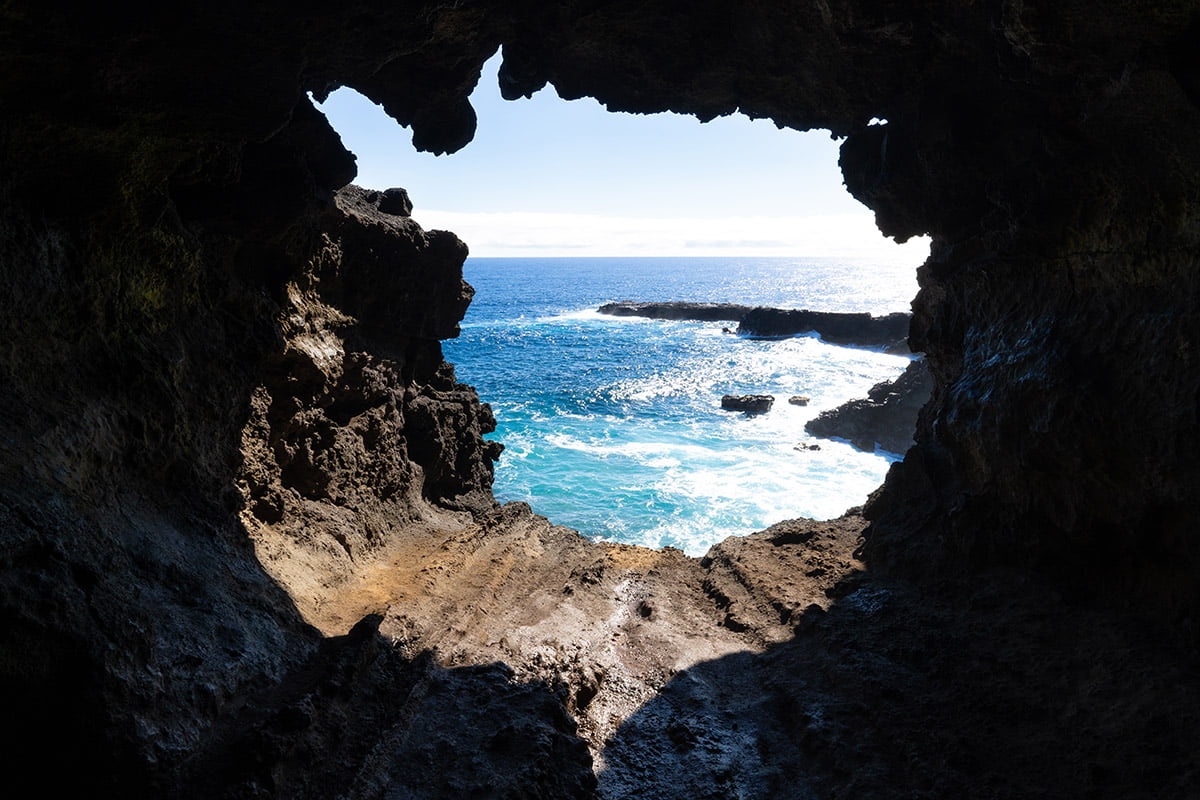

Ana Kakenga cave with with an ocean view at the end of the darkness
Day 3 – exploring on a moped
The last full day on the island I rented a moped for 40.000 pesos (€40). Merahi advised me to go to Mount Terevaka, the highest point on the island. From the parking lot it’s a 1,5 hour walk slowly uphill. Although I could’ve easily driven a bit further uphill with the moped for an easier and shorter hike. Reaching the top, I do have an almost 360 degree view of the entire island.
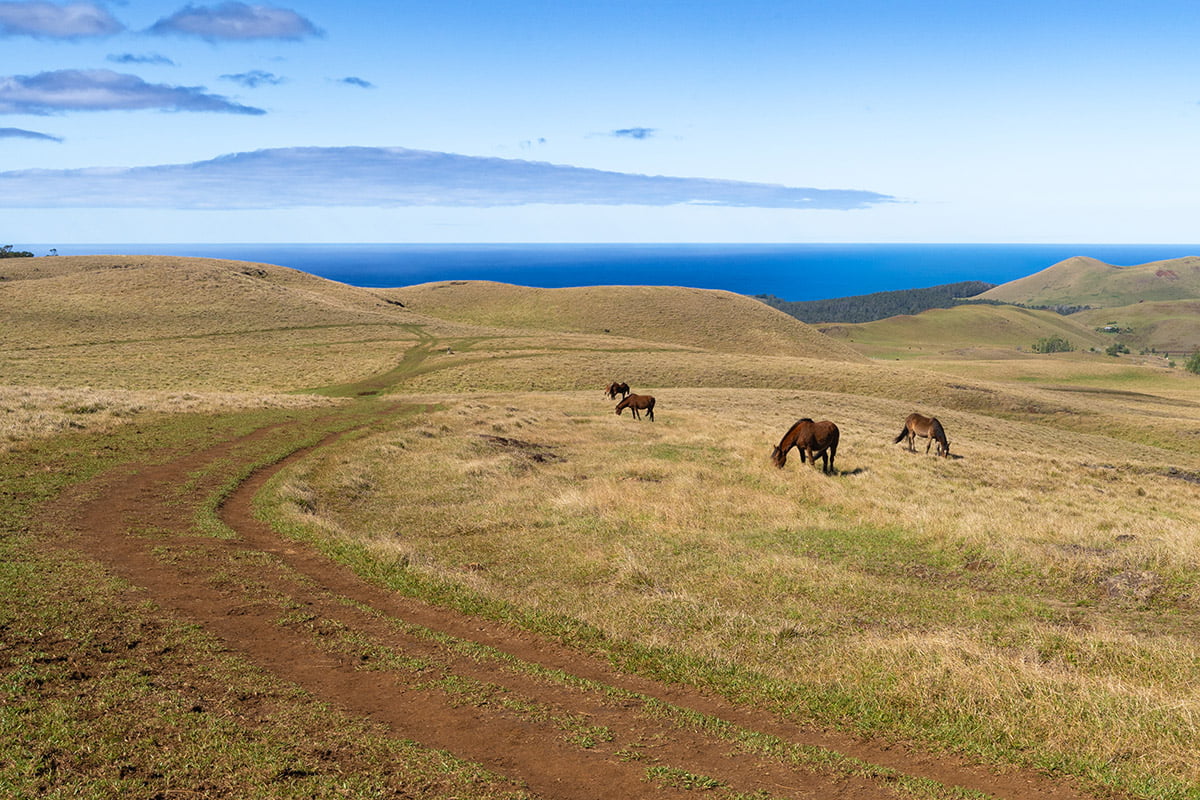
On top of Terevaka
After my lengthy walk, it’s time to hit the beach in the afternoon, and I drive back to the beautiful Anakena beach. I’m enjoying the sun while sitting in the white sand and dipping my feet in the fresh water. Although people are swimming, I personally find the water a tad cold.

Palm trees at Anakena beach
Driving along the coast I constantly got amazed by the gorgeous views, and I was even lucky enough to see a whale close by! (no photo unfortunately)
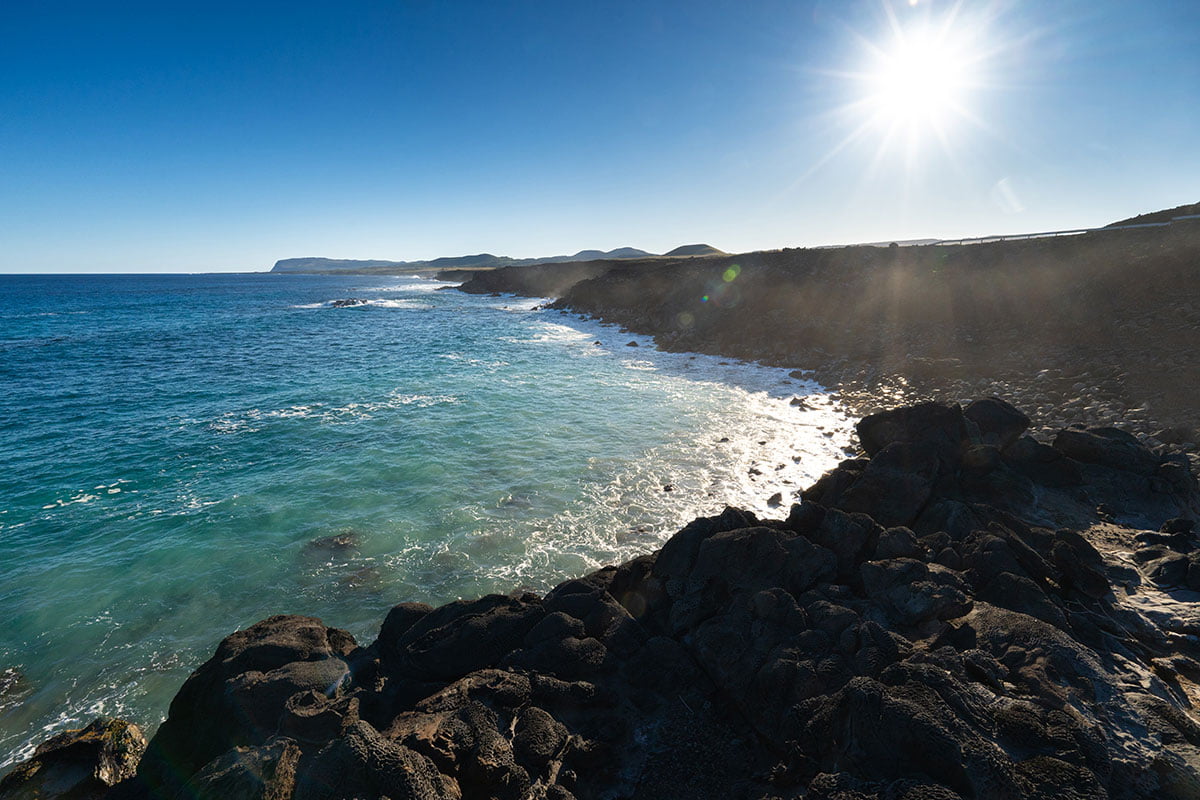
Rugged South coast
The evening I spend wandering the shore around town, where people are enjoying the water and the sunset.
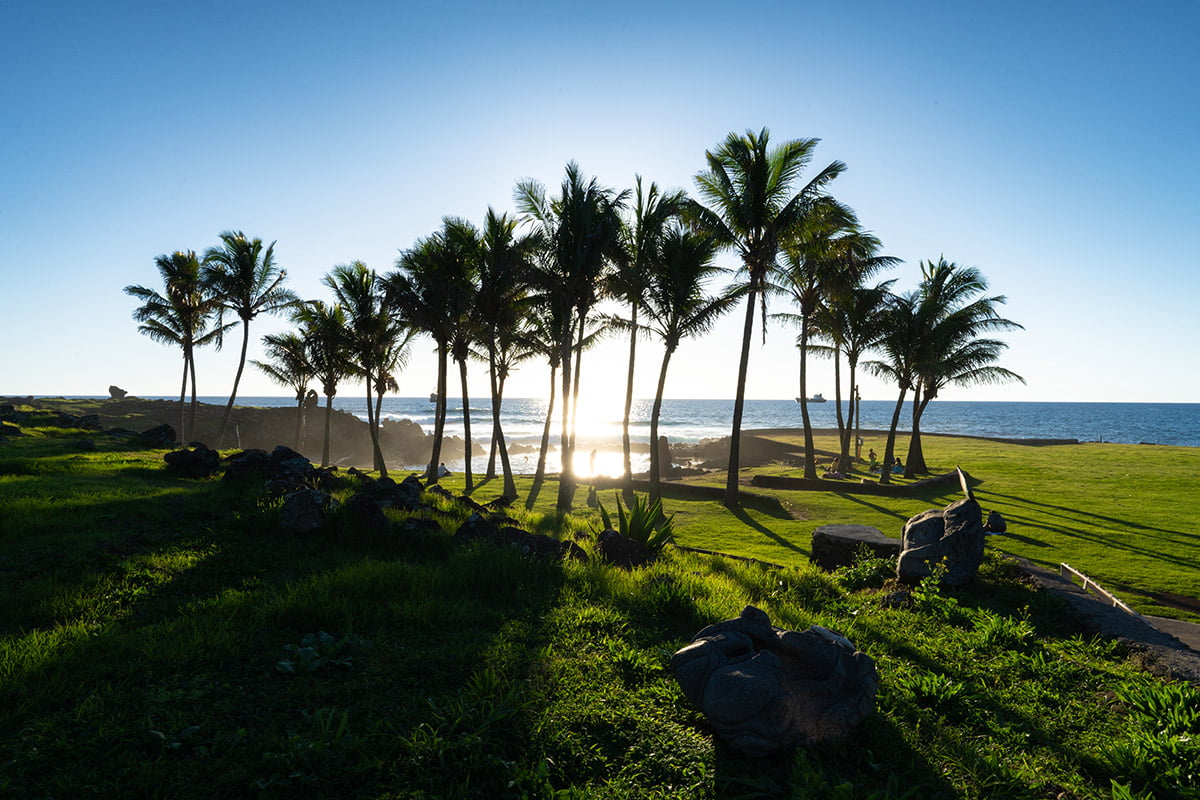
Sunset vibes
Is Easter Island worth it?
Hell yes! My Easter island adventure has come to an end and I enjoyed every bit of it. From the moment of arriving on a Polynesian island and being greeted with a flower necklace. The experience of seeing the Moai up close and personal felt otherworldly. The realization of being in the middle of the Pacific and far from home. Being gifted a farewell necklace with a moai when departing. Everything was a big highlight.
Is Easter Island expensive?
Easter island has the general impression of being expensive, but I have to somewhat disagree. The prices are very similar to the rest of Chile (which is a more expensive country in South America). Here is my breakdown:
Return flight from Santiago to Rapa Nui: €450
Hotel 4 nights: €300 (€75 a night)
National park pass: €75
Private guide for 2 days: €250
Moped rental 1 day: €40
Total: €1.115, plus whatever you spend on food and drinks.
Random fact
People on the island love Dunkin Donuts! Before boarding the plane, I noticed loads of people carrying multiple boxes of Dunkin Donuts and bringing them on the plane. I asked my guide, and yes, it’s a thing they love!

Merahi and myself



Wat een bijzonder eiland en de prachtige foto’s die je weer gemaakt hebt.